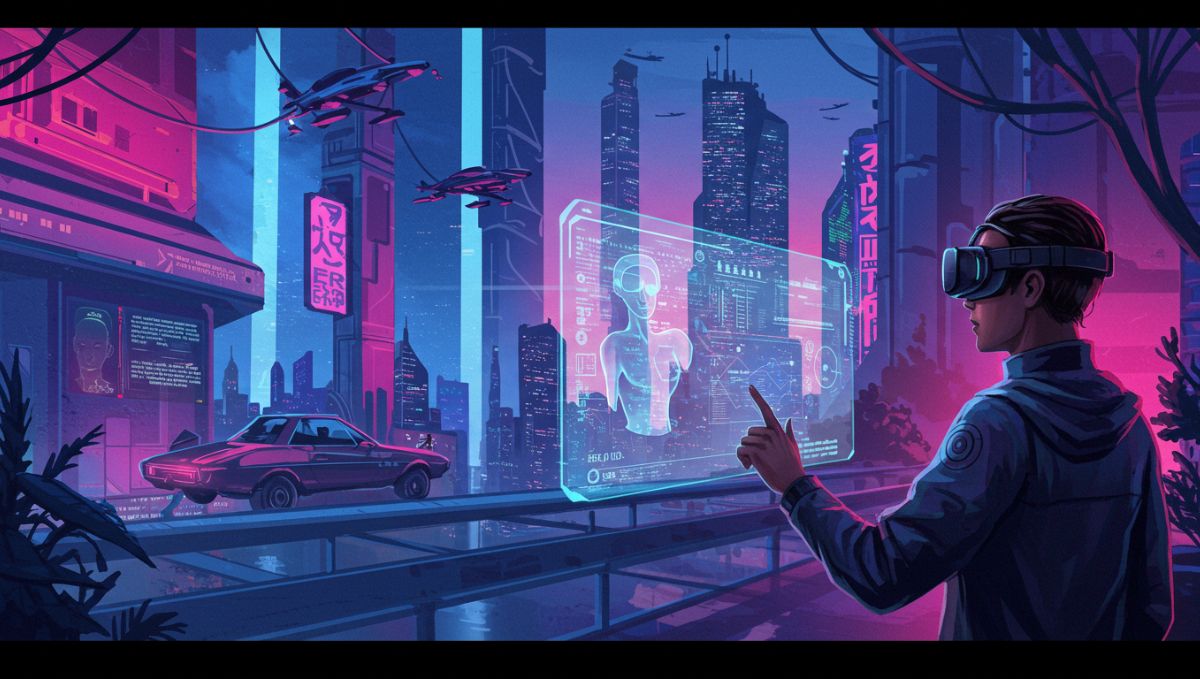For over a decade, smartphones have defined modern life. From communication and commerce to entertainment and navigation, these pocket-sized devices have become indispensable. But as adoption reaches saturation, innovation is slowing. This shift raises an important question: what comes next? Across Silicon Valley and beyond, tech giants envision future beyond smartphones, exploring new devices and technologies that could become the next big leap in digital interaction.
Why Move Beyond Smartphones?
The push toward new platforms is driven by several factors:
-
Market Saturation: Almost everyone owns a smartphone, limiting growth potential.
-
User Fatigue: People seek fresher, more immersive experiences.
-
Technological Evolution: Advances in AI, 5G, and miniaturization create possibilities beyond rectangular screens.
-
Ecosystem Expansion: Companies want to control not just devices but the full digital lifestyle of consumers.
This environment has sparked intense innovation in wearable tech, augmented reality, and artificial intelligence.
Tech Giants Leading the Shift
Apple’s Vision: Augmented Reality and Wearables
Apple is investing heavily in AR, with its Apple Vision Pro headset hinting at a future where screens blend seamlessly with the real world. The company already dominates the wearables market with the Apple Watch and AirPods, both of which are stepping-stones toward replacing smartphones as primary digital hubs. Apple’s strategy focuses on creating a unified ecosystem that keeps users engaged across devices, even when the smartphone is no longer central.
Google’s Approach: Ambient Computing
Google imagines a world where technology fades into the background. Through AI, voice recognition, and smart home integration, Google wants to create an ambient computing environment. Devices like Nest smart speakers, AR glasses, and AI-driven assistants may eventually minimize the need for traditional screens. Instead of checking a smartphone, users could interact with an invisible layer of computing embedded into everyday life.
Meta’s Bet: The Metaverse and AR Glasses
Meta (formerly Facebook) is betting on virtual and augmented reality. With billions invested in Oculus and AR projects, the company sees a future where digital interaction occurs in immersive environments rather than through smartphone apps. Although adoption is still early, Meta envisions AR glasses as a replacement for the smartphone’s role in social networking and communication.
Microsoft’s Perspective: Enterprise and Mixed Reality
Microsoft is taking a business-first approach. Its HoloLens has been developed primarily for professional use cases like training, healthcare, and engineering. While it may not replace smartphones in consumer markets immediately, Microsoft’s innovations point to a future where mixed reality tools play a bigger role in work and education.
Amazon’s Focus: Voice and Ubiquitous AI
Amazon is less invested in smartphones but deeply focused on voice-first technology. Through Alexa and Echo devices, Amazon imagines a world where interaction is conversational rather than screen-based. Instead of opening apps, users can simply ask for what they want. This aligns with the broader trend of shifting away from handheld devices toward more natural, hands-free interaction.
Emerging Technologies Shaping the Future
1. Augmented Reality (AR)
AR overlays digital information on the physical world. Tech giants are developing lightweight glasses that could replace smartphones by providing notifications, maps, and entertainment directly into users’ fields of vision.
2. Virtual Reality (VR)
While VR has primarily been used for gaming, companies are exploring its role in remote work, education, and entertainment. A world where immersive experiences replace scrolling on a phone may not be far off.
3. Wearables
Smartwatches, earbuds, and health trackers already extend smartphone functionality. Future versions could evolve into independent hubs, reducing reliance on phones.
4. Artificial Intelligence
AI-powered assistants will play a key role in replacing smartphones. By understanding context and anticipating needs, AI can make technology more seamless and proactive.
5. Brain-Computer Interfaces
Though experimental, brain-computer interfaces represent the farthest frontier. Companies like Neuralink are exploring direct links between the human brain and digital systems, bypassing physical devices entirely.
Challenges in Moving Beyond Smartphones
While the vision is exciting, obstacles remain:
-
Affordability: High costs of new devices slow adoption.
-
User Acceptance: People are comfortable with smartphones and may resist change.
-
Privacy Concerns: More immersive tech raises questions about data collection and surveillance.
-
Technical Limitations: Battery life, connectivity, and hardware miniaturization need improvement.
Consumer Reactions and Expectations
Surveys reveal that many consumers are curious but cautious. While some are eager for AR glasses or AI-driven environments, others remain skeptical, worried about complexity and invasiveness. Tech giants must balance innovation with trust-building to convince users that life beyond smartphones is not only possible but desirable.
The Role of AI in the Post-Smartphone Era
AI is the common thread across all future visions. Whether through voice assistants, predictive algorithms, or context-aware computing, AI will underpin the shift beyond smartphones. It will help devices anticipate needs, personalize experiences, and create smoother interactions between people and machines.
What the Future Could Look Like
Imagine walking through a city wearing lightweight AR glasses. Directions appear in your field of vision, notifications float seamlessly, and translation happens in real time. At home, you interact with devices through natural speech rather than tapping on apps. At work, holograms replace video calls. This is the world that tech giants envision future beyond smartphones, one where computing is everywhere but rarely visible.
Timeline for Transition
-
Short-term (2025–2030): Expansion of AR headsets, wearables, and AI assistants as smartphone companions.
-
Mid-term (2030–2040): Wider adoption of AR glasses, reduced dependence on handheld devices.
-
Long-term (2040 and beyond): Potential dominance of immersive, AI-driven environments, with smartphones becoming secondary tools or obsolete.
Conclusion: A World After Smartphones
Smartphones have been the centerpiece of digital life for over 15 years, but the era of rectangular screens may soon give way to something bigger. tech giants envision future beyond smartphones not as a single device but as a constellation of technologies—AR, AI, wearables, and immersive environments—that redefine how humans and machines interact. The journey is just beginning, and while challenges remain, the potential is transformative.
